The search or user intent is a core aspect of most search marketing strategies and tactics. Leading platforms like Semrush and Ahrefs assign an intention class to keywords populated on the system.

The above is a simple illustration in the work titled “The Category of the Mind: Folk Psychology of Belief, Desire, and Intention by Yoshihisa Kashima
In the work he clearly stated that beliefs and desires do not primarily cause action but intention is believed to act as the causal link between belief-desire and action. In addition, within folk psychology humans are considered to utilise beliefs, desires and intentions to understand, predict and explain human action.
In search, marketers expect a lot of human actions such as clicking, scrolling, submitting an enquiry form, completing an online purchase, downloading a whitepaper or ebook etc.
Intent classification in Semrush and other platforms:
I typed the keyword “UK mortgage rates” into the Semrush keyword tool to generate similar keywords and display relevant metrics such as search volume, keyword difficulty, SERP features (Search Engine Results Page), and, of particular interest is the intent classification for these keywords.
From the image below, you can see that a keyword like “UK mortgage rates” has two intent classification labels: informational and commercial. Another keyword, “mortgage rates UK”, also has a dual intent label of ‘I, C’, which again denotes informational and commercial. These intent classifications, however, do not reveal much about the motivational state or desired outcomes of users who type such queries into search engines. Another keyword, “mortgage interest rates UK”, is labelled purely informational.
I have consistently argued against the overgeneralised and shallow nature of these intent labels. There is a need for a more nuanced, dynamic, model-driven, and contextual approach to ascribing intent, which would enable marketers to better understand, explain, and predict human actions.
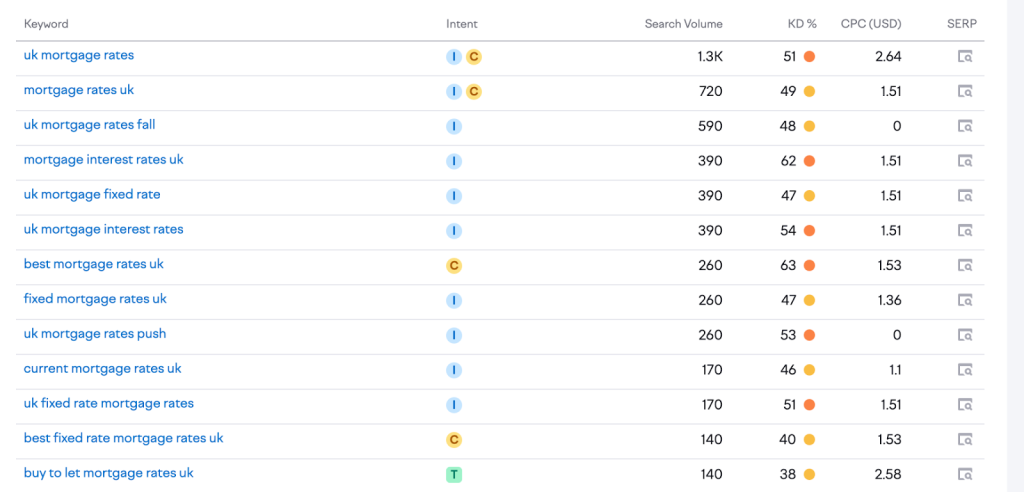
The above oversimplification of intents fails to create a platform to understand, predict, and explain human action. Sometimes the logic and reasoning around these terms is questionable.
Going back to two terms such as ‘uk mortgage fixed rates’ classified as informational and ‘best mortgage rates’ viewed as transactional is somewhat confusing when searches for both returned Ads on the SERP for the keyword labelled informational and no ads for the keyword tagged as transactional. I obviously understand that search results is personalised and different results could be served to different users based on their search history.
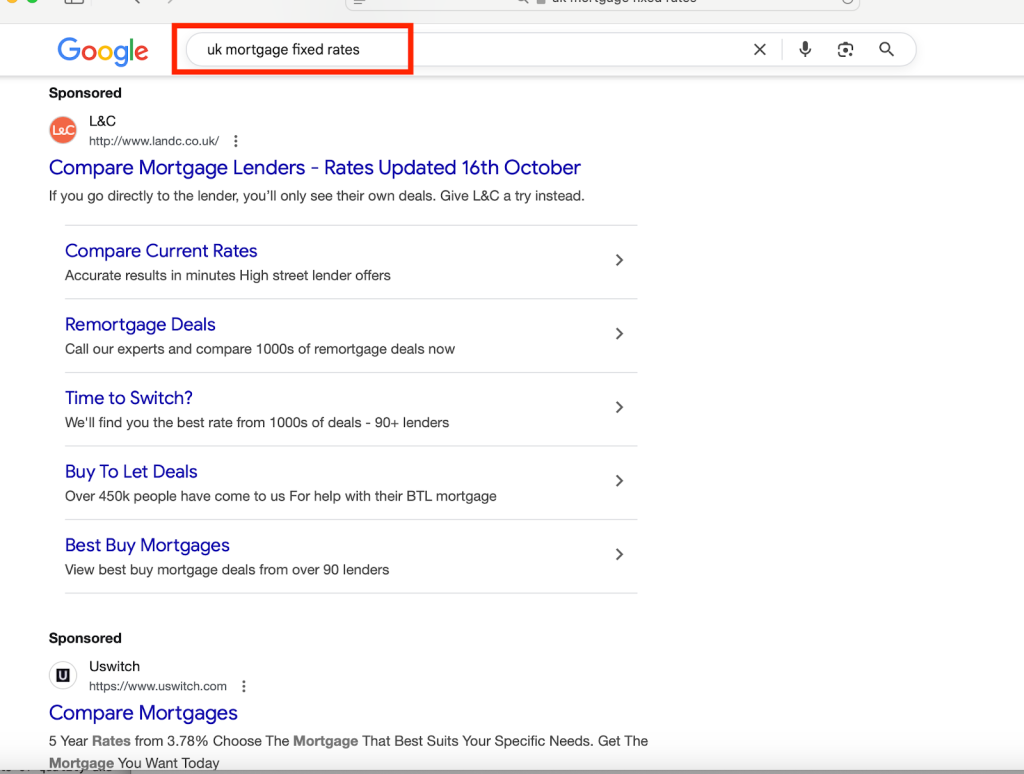
This simple example clearly challenges the logic behind the oversimplification of search intent and fails to capture the internal dynamics or the evolving nature of the root term “mortgage rates.”
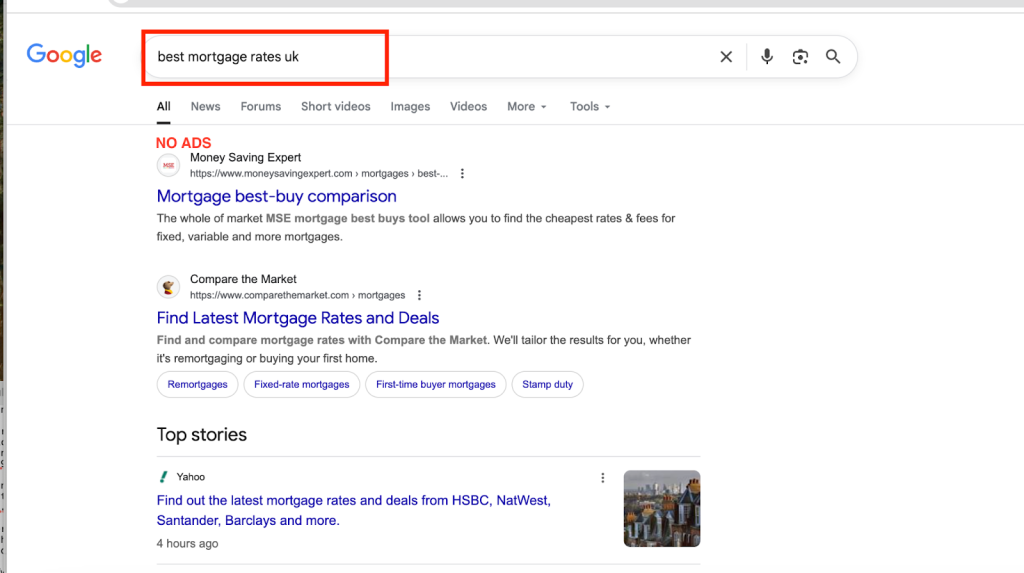
This approach of classifying intents also fails to capture the contextual drivers behind the seed term or concept. Rather than relying on tools that oversimplify intent classification at both the head term and long-tail level, it may be more effective to utilise a model-driven approach at the seed or head term level.
In the case of mortgage rates, intent modelling (rather than simple classification) can be performed at the head term level. A schematic folk psychology framework can be used to model the relevant “people also asked” questions and long-tail keywords into beliefs, desires, and intentions, and to rank possible actions. This is a context-rich approach that addresses the oversimplification problem inherent in current search intent classifications.
For the seed query “mortgage rates”, intent modelling can explore expanded terms such as “mortgage rates today,” “current mortgage rates,” or “30-year mortgage rate” without resorting to oversimplified intent labels for these keywords.
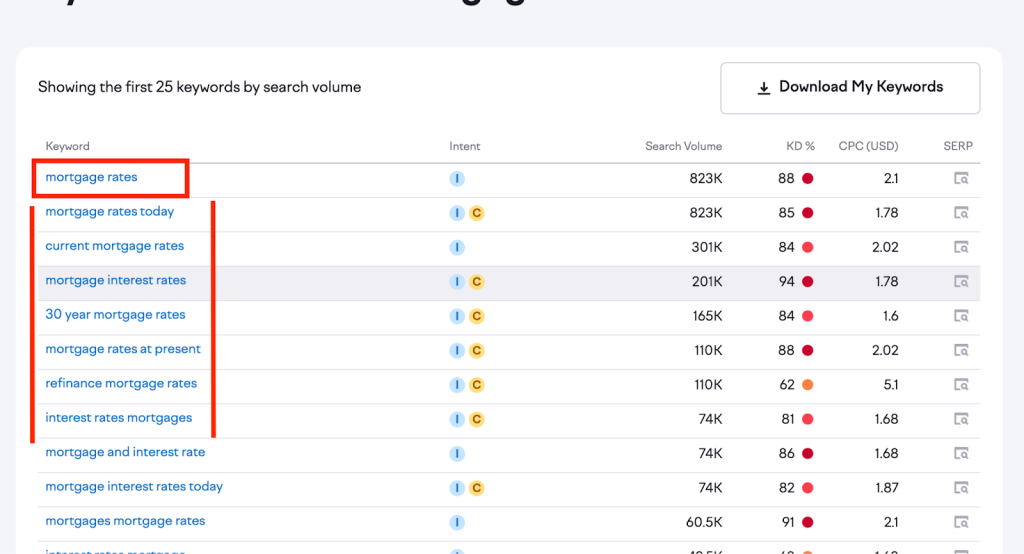
Extracting belief statements for People Also Asked questions to to guide the intent narrative:
Intent is like a chain or a narrative and not a bucket classification. For the seed term ‘mortgage rates”, there is a PAA that goes thus “when will mortgage rates drop.” using a tool like AlsoAsked, you can find a handful of questions around high mortgage rates or increasing mortgage rates.
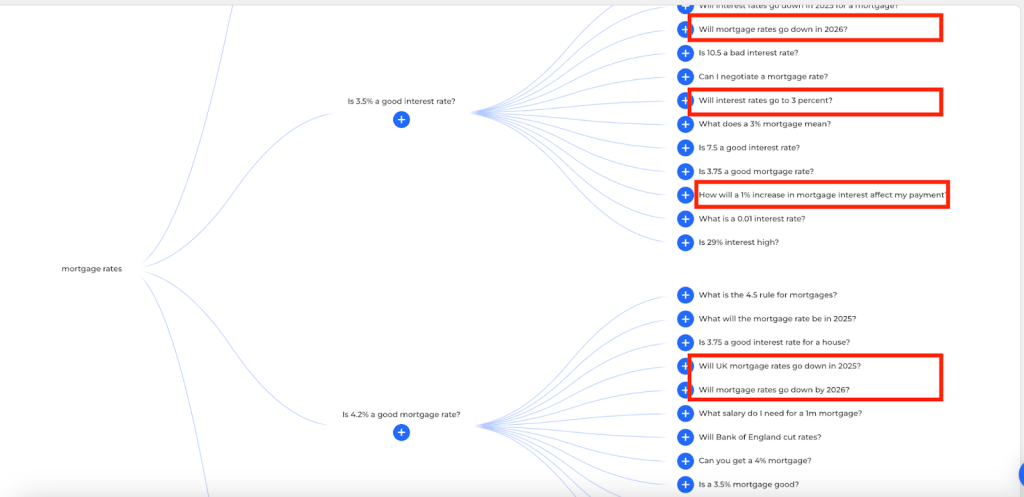
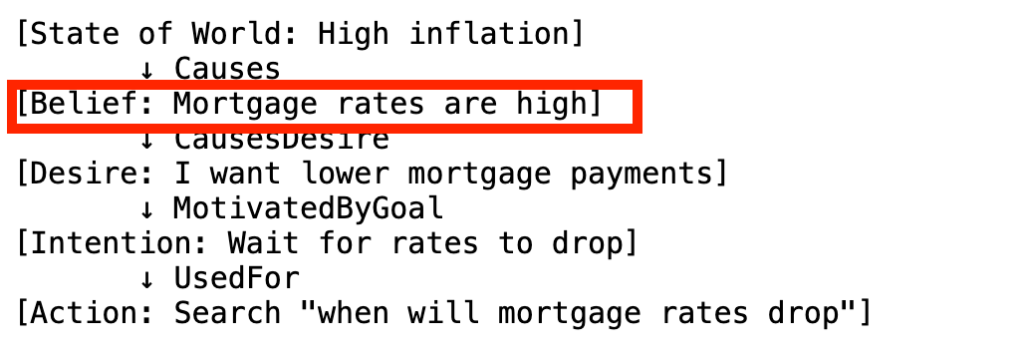
These questions can be grouped around similar themes, allowing a common belief to be extracted and linked to a relevant desire. From the screenshot above, we can see that a state-of-the-world factor, such as high inflation, leads to the belief that mortgage rates are high and generates a desire for lower payments. The sequence essentially works backwards.There is significant potential for enrichment using this framework, especially when combined with commonsense relations. Additional content will follow in upcoming blogs.